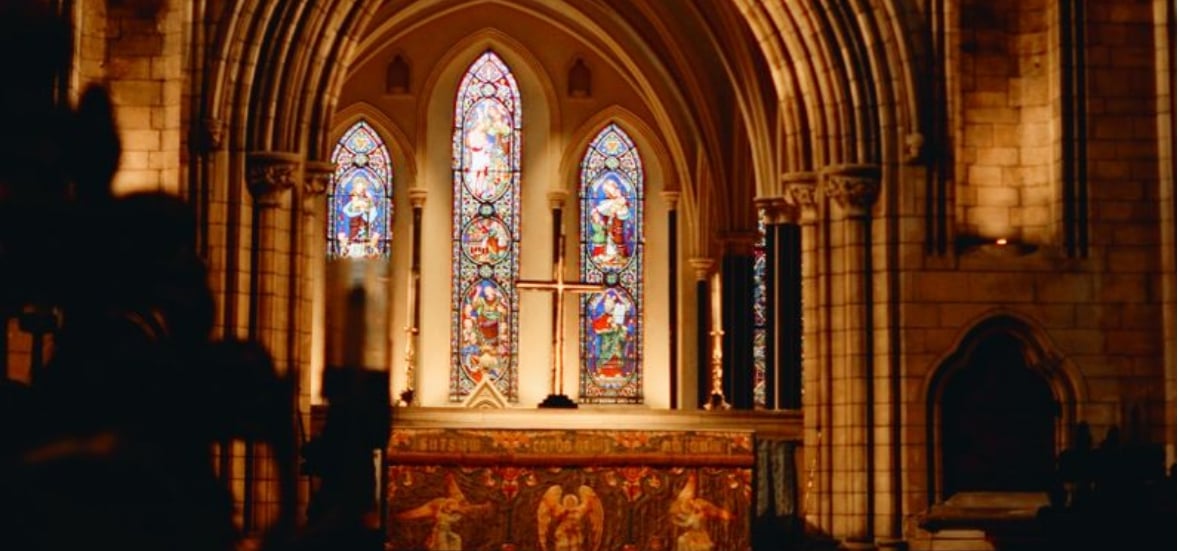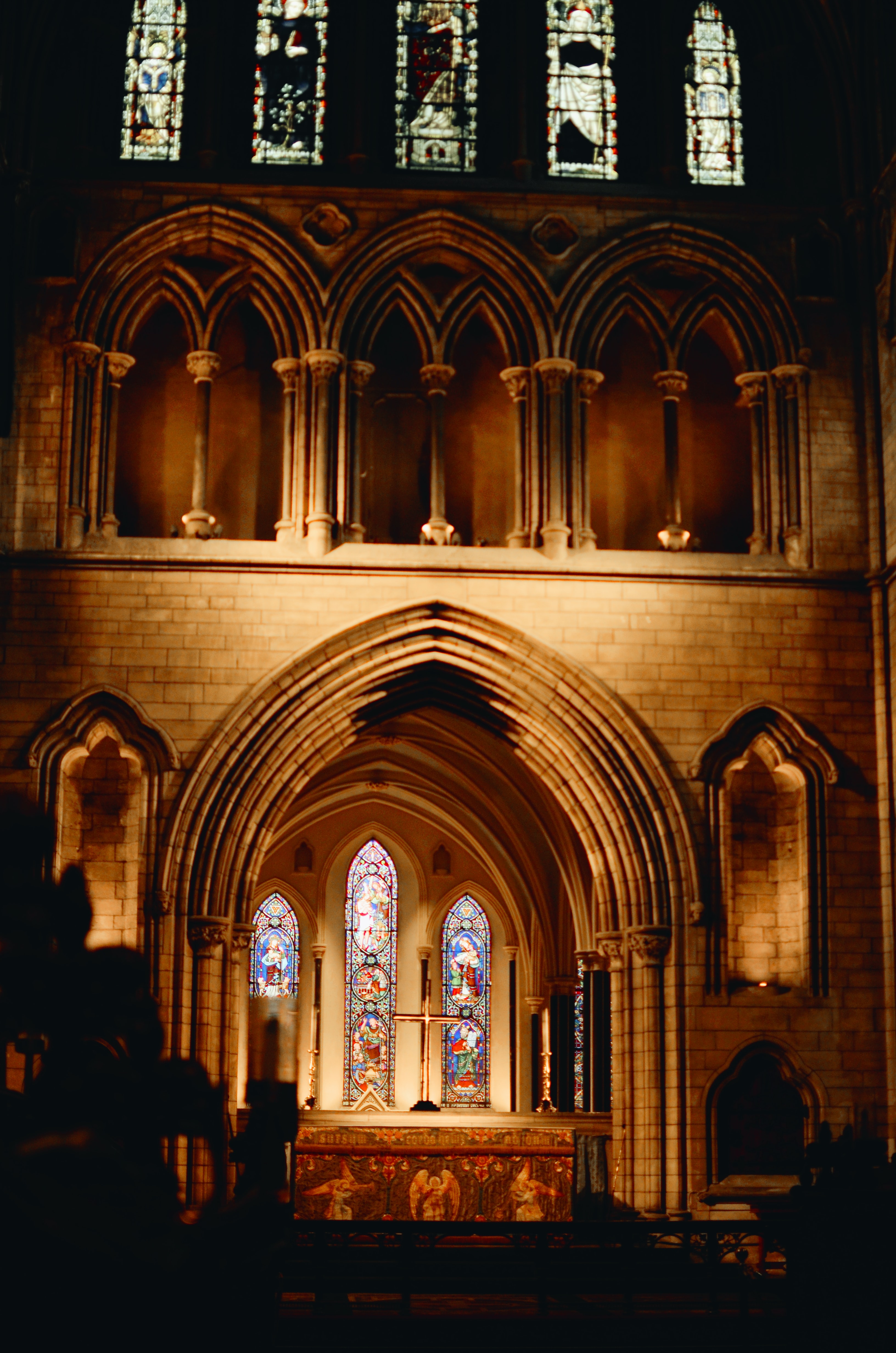
Even after years of faith, Jennifer Landis observes, there are still new things to learn and new tests of faith.
The Catholic Church traces its roots back almost 2000 years, making it the West’s oldest institution. Today, more than one billion Catholics and about 10% of the U.S. population claim to practice the Catholic faith. Being one of them, you probably know a thing or two about the sacraments, saints, Eucharist and popes. However, you may still not know a few facts about Catholicism, even after years in the faith.
1. The Tabernacle Lamp Must Burn Continuously
In Jesus’ time, Jews used olive oil to fuel small, round lamps which they burned continuously to provide light and warmth to homes. They also symbolized vigilance, the prophetic word and, most importantly, the presence of God. Thus, the lamps had — and still have — deep religious significance.
Many Catholic churches have at least one lamp continually burning before the tabernacle to indicate the Lord’s presence in a sinful world. Until He returns, they must not let the light go out — literally and figuratively.
2. The Fish Emblem Has Two Meanings
Christians have been using the symbol of the fish — or the ichthys — since the second century AD. By the third and fourth centuries, it had become a widespread emblem that secretly connected believers who were experiencing persecution under the Roman empire. In Greek, ichthys is a monogram for the first five letters of the words Jesus Christ Son or God, Savior.
Because of the miracle of the loaves and fishes, many also associate the fish emblem with the Holy Eucharist. In John’s gospel, the apostle even made a connection between eating fish and bread with Jesus and the Eucharist. Some church historians also believe that eating fish together may have been part of the earliest Eucharist services.
3. Pews Weren’t Always Popular
For most of church history, the younger generations stood and worshipped while their elders sat on benches. Eventually, kneeling became so popular that churches were running out of room for people to gather. In an attempt to create more space and more comfortable seating areas, congregations made pews. These wooden benches were expensive, making them a luxury for most Catholics.
Consequently, they didn’t become popular until a century after their creation. Moreover, Catholics only began using pews in churches after the Protestants. Now, pews are relatively affordable and many Christian congregations of all denominations use them in their house of worship.
4. A Catholic Proposed the Big Bang Theory
Most people believe that Edwin Hubble was the pioneer behind the Big Bang Theory. However, a priest was actually the first to suggest this origin theory. Georges Lemaitre, a Belgian Astronomer and Roman Catholic priest first proposed that the universe came from a primeval atom in the early 1930s.
The Church embraced Lemaitre’s theory as proof that the birth of the universe was a work of God. Even Pope Pius XII publicly favored the Big Bang in the 1950s. Now, many Catholics take no issue with the Big Bang and openly embrace it as their creation story.
5. The Catholic Church Doesn’t Reject Evolution
Pope Pius XII also declared that Catholics can believe in evolution if they so choose. Pope St. John Paul II also taught that evolutionary theory has solid scientific grounding. Today, the Church supports theistic evolution because it doesn’t oppose the notion of creation. However, it doesn’t hold any official position on the theory of evolution or creation. Thus, each individual must decide whether to accept literal creationism or theistic evolution.
Regardless, the Church holds that God initiated creation and that all humans have special, individual souls that stand apart from any evolutionary ancestors they may have. People possess immortal souls, elevating them to a higher order and granting them capacity to have a relationship with God.
6. Stained Glass Sets Minds On the Divine
Almost all Christian denominations use stained glass to depict sacred images. However, when most people think of stained glass windows, they unwittingly picture some of the most iconic Roman Catholic churches, basilicas and cathedrals. This artwork often depicts the life of Jesus, the parables, Mary, the Stations of the Cross, the sacraments and the saints.
Originally, artists created these stained glass windows to educate the viewer in Catholic doctrine. The physical illustration showed truths of the Catholic faith and made them attractive and perceptible. Today, Catholics still use this art to bridge the gap between the earthly and the divine. As you look upon it, you experience color, light and imagery you can catch just a small glimpse of the creator, Himself.
Keep Fanning the Flame
After years of attending Sunday Mass and practicing the seven sacraments, you may find yourself in a ritualistic rut. You’ve gone through the motions so many times. How could there possibly be more to learn? Well, it seems there’s more to Catholicism than you might think. Even after years of faith, there are still new things to learn and new tests of faith.
Therefore, it’s important to keep your eyes and ears open and continue to fan that flame in your heart.

Copyright 2020 Jennifer Landis
Image: Christian Bowen (2019), Unsplash
About the Author

Jennifer Landis
Jennifer Landis is a convert to the Catholic faith, a mom, wife, writer, and blogger. She is the founder of Mindfulness Mama, a blog where she encourages moms to make more out of mom life by finding moments of mindfulness every day.


.png?width=1806&height=731&name=CatholicMom_hcfm_logo1_pos_871c_2728c%20(002).png)
Comments